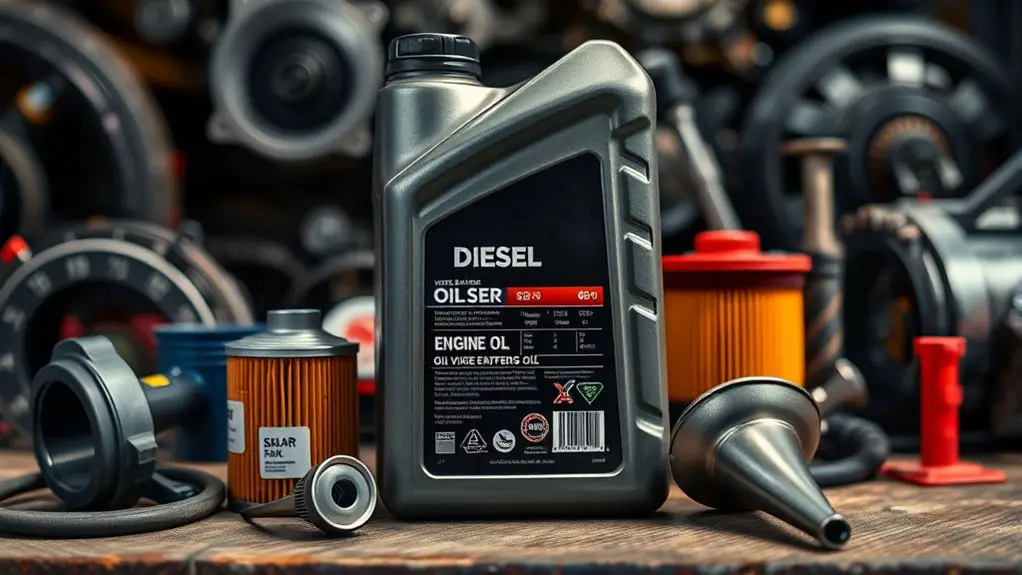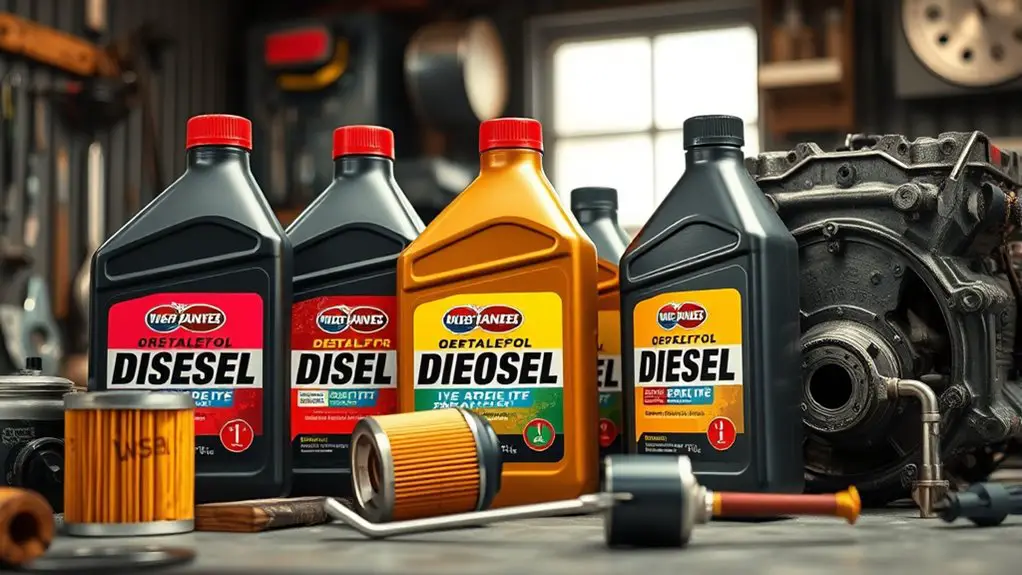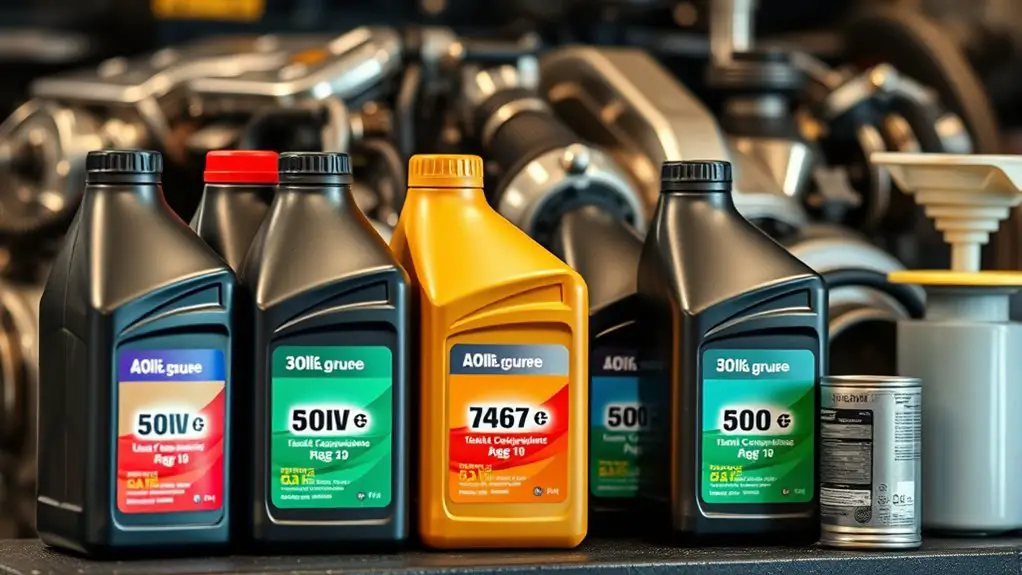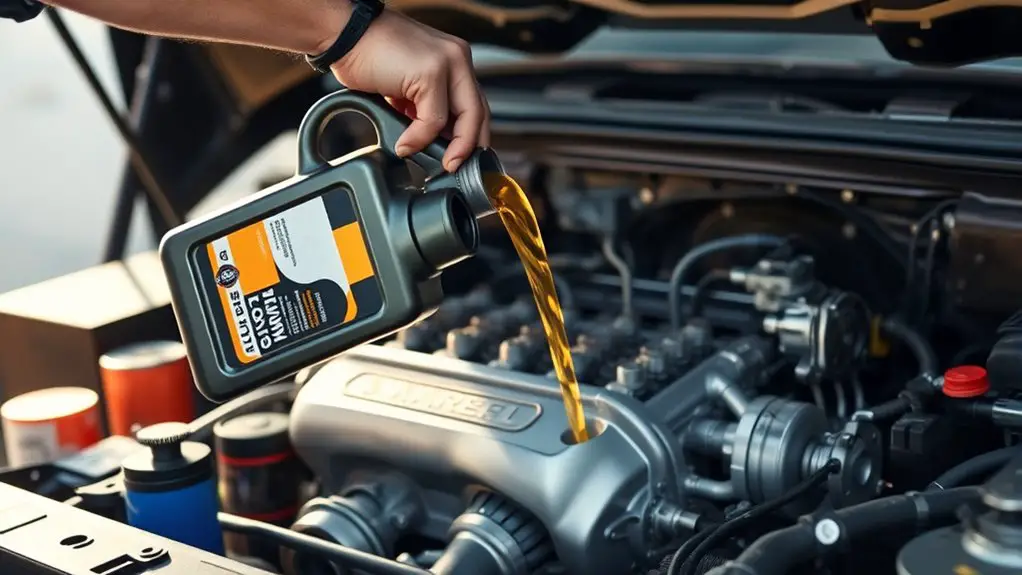How to Choose the Right Engine Oil for Your Diesel
To choose the right diesel oil, start by matching viscosity to your climate and operating temps, then confirm the grade meets API, ACEA, and OEM specs for your engine. Consider an additive package tuned for diesel—detergency, soot control, and oxidation resistance—to support filter life and deposits. Align with engine age and mileage for wear protection and start-up behavior. Pick synthetic, synthetic blend, or conventional based on heat, workload, and maintenance cadence. If you keep going, you’ll uncover how to optimize drain intervals and targets.
Understanding Oil Viscosity and Standards

Oil viscosity describes how thick or thin an engine oil is at operating temperatures, and it’s defined by a numeric grade (e.g., 5W-40) plus performance standards from bodies like API, ACEA, and OEM specifications. You’re validating viscosity to match your engine’s targets, not just chasing a label. Choose viscosity bands that align with ambient range, load, and oil temperature behavior under steady and transient conditions. In practice, you’ll compare multi-grade specs (such as 5W-40 or 0W-20) for cold start protection and high-temperature stability, ensuring the oil maintains film integrity under torque and heat. Standards orientation matters: API, ACEA, and OEM sheets define tests for shear, viscosity retention, and oxidation resistance. Real-world diagnostics emphasize oil temperature trends, wear patterns, and fuel efficiency signals. Your goal is consistent lubrication, minimal fuel burn, and predictable engine response, backed by compliant specifications rather than marketing.
Diesel-Specific Additive Packages Explained

Diesel-specific additive packages are engineered to address the unique combustion and emission challenges of diesel engines, focusing on detergency, soot control, and oxidation resistance. You’ll find these packages tailor-made to keep piston crowns clean, reduce deposit formation, and stabilize fuel-derived radicals that accelerate wear. In practice, additive systems target soot dispersion, preventing agglomeration that can accelerate filter clogging and exhaust backpressure. They also improve on-engine cleanliness by preventing sludge and varnish, aiding reliable starts and consistent oil lifecycles. Performance is measured by shear stability, oxidation resistance, and compatibility with common basestocks and emission-control components. You’ll assess additive benefits through observable indicators: reduced peak wear, steadier oil pressure, and lower maintenance intervals. Choose formulations that align with your engine’s duty cycle, fuel quality, and service intervals, ensuring predictable performance enhancement without compromising filter longevity or fuel economy.
Matching Oil to Engine Age and Mileage

Engine age and mileage influence oil selection by dictating wear patterns, filtration efficiency, and the likelihood of sludge or varnish accumulation; matching viscosity, API/ACEA ratings, and additive package to these factors helps sustain protection and oil life across service intervals.
To tailor your choice, align viscosity to current engine wear and operating temps, verify approvals for your engine’s age, and prioritize additive systems addressing deposit control and anti-wear needs. In older engines, consider higher TBN or robust detergents to counter oil degradation, while maintaining flow at low temperatures in colder climates. Monitor filter efficiency and sludge tendencies, and adjust drain intervals accordingly to maintain oil integrity.
| Age/Mileage Tier | Recommended Viscosity/Specs | Key Concerns |
|---|---|---|
| 0–60k mi | Standard 5W-30/15W-40, API/ACEA as specified | Normal wear, deposits manageable |
| 60–150k mi | 10W-40 or 5W-40, enhanced detergents | Sludge risk, varnish control |
| 150k+ mi | 15W-40+, high-detergent, API/ACEA targeted | Oil degradation, bearing wear |
| Severe service | As per extended-interval guidance | Elevated wear, filtration load |
Synthetic, Synthetic Blend, Vs Conventional: Pros and Cons
Synthetic, synthetic blend, and conventional oils each offer distinct trade-offs in protection, performance, and cost. You compare viscosity stability, deposit control, and wear protection side by side, so you can select predictability under duty cycles you actually run. Synthetic advantages include higher thermal stability, better oxidation resistance, and cleaner operation at extended intervals, which translates to steadier oil pressure and reduced sludge risk in tough diesel environments. Synthetic blends strike a balance, delivering improved heat and shear tolerance with lower cost than full synthetics, useful when you need reliable protection without premium pricing. Conventional oils, by contrast, emphasize affordability and availability but present greater conventional limitations: faster oxidation, more residue formation, and narrower temperature operability, particularly under high-load or extreme-cold starts. Your choice should align with engine design, operating temperature, and maintenance cadence. Prioritize consistency, test results, and manufacturer guidelines, noting that real-world performance hinges on staying within proven oil targets and service intervals.
Reading Labels and Following Manufacturer Recommendations
Guiding through oil labels and manufacturer guidance is essential for reliable diesel performance; clarity on labels translates directly to proper HP/HT ranges, viscosity targets, and service intervals. You’ll perform label analysis with a focus on oil grade, API/ACEA specs, and SMI codes, then cross-check against manufacturer guidelines to confirm compatibility and change intervals. Adhere to documented tolerances, blenders, and additive limits to avoid misselection. This is about precise interpretation, not guesswork.
| Label element | What to verify | Why it matters |
|---|---|---|
| Viscosity grade | 5W-40, 15W-40, etc. | Impacts cold starts and high-temperature protection |
| Certification | API/ACEA/OEM marks | Guarantees tested performance and compatibility |
| Service interval | OCI/LCI, max hours | Guides drain timing and wear prevention |
Apply these steps to every oil decision, aligning with manufacturer guidelines and documenting your rationale for future reference.
Frequently Asked Questions
Can I Mix Diesel Engine Oils From Different Brands?
Mixing diesel engine oils from different brands isn’t recommended. You should avoid it to protect brand compatibility and oil performance. If you must, guarantee both oils meet the same official spec and viscosity grade, then run a short, monitored interval with regular tests for any unusual wear or viscosity shifts. Always verify compatibility first with the OEM or lubricant manufacturer. Defaults to a single-brand oil strategy for predictable diagnostics and standards alignment.
How Often Should I Change Oil for Extreme Cold Starts?
Oil changes for extreme cold starts should be timed based on cold-weather use, but you typically interval-change every 5,000–7,500 miles (8,000–12,000 km) or every 6–12 months, whichever comes first. In practice, monitor oil viscosity and engine temps; use thinner oil for cold weather. Opt for a multi-viscosity grade suited for cold starts, and verify with manufacturer specs. Check dipstick readings and service alerts, adjusting interval if you see varnish or sludge buildup.
Do High-Mileage Diesels Require Special Oils?
Yes—high-mileage diesels often benefit from special oils. You should consider high mileage considerations like additives for seal conditioning and viscosity adjustments, and recognize oil formulation differences that address wear and sludge tendencies. You’ll want a formulation with robust shear stability, detergents, and reduced evaporative loss. Diagnostics: monitor oil consumption and exhaust temps, then match oil to policy specs and your engine’s wear pattern. Freedom to choose manufacturer-approved, high-mileage oils supports long-term reliability.
Are There Oils Designed for Biodiesel Blends?
Let’s be blunt: yes, there are oils designed for biodiesel blends. You’ll want biodiesel compatibility verified, and you’ll track oil performance under biodiesel exposure. In practice, choose API CK-4/FA-4 or ACEA standards with additives for oxidation and elastomer protection, and confirm OEM compatibility. Monitor fuel blends, temps, and filter cleanliness. You’ll get reliable lubrication by following diagnostics, not myths, while staying within your vehicle’s service intervals and performance specs.
What Affects Oil Cost Beyond Viscosity and Spec?
Cost beyond viscosity and spec is driven by formulation factors like oil additives and the choice between synthetic blends. You’ll see premium friction modifiers, detergent systems, and antioxidant packages that raise price but improve wear protection and long-term stability. Market factors—brand, supply, and packaging—also matter. You assess oil additives and synthetic blends for performance vs. cost, balancing reliability and maintenance intervals to fit your freedom-driven, technically precise diagnostic needs.







